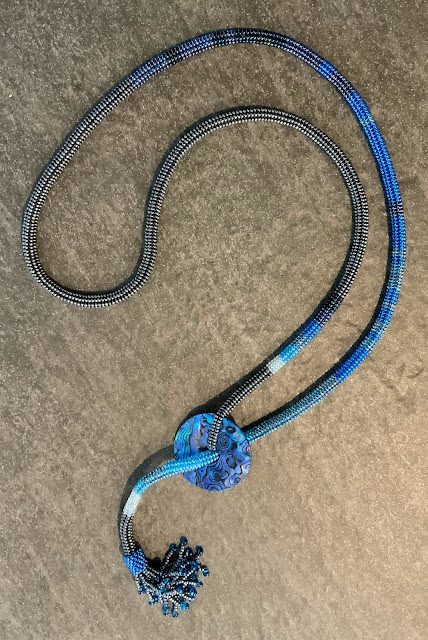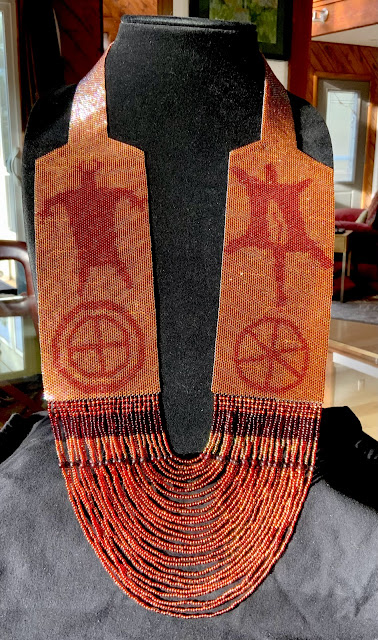These are images from beadwork I did while serving as the Artist-in-Residence for Capitol Reef National Park in central Utah. If you've never been to Capitol Reef, hopefully these images will inspire you to plan your trip!
I have a PhD in Meteorology, so I've done some work incorporating meteorological and climatological data in my beadwork, in an effort to make complex data easier to visualize.
This lariat highlights changes in maximum temperatures in southeast Utah.
This lariat highlights changes in minimum temperatures in southeast Utah.
This necklace highlights changes in average yearly temperature in southeast Utah.
This necklace highlights the changing climate in central Alaska.
This necklace shows how yearly temperatures in central Alaska have changed over a 120-year period, from cooler than average (yellow) to warmer than average (red). The lynx is very susceptible to a changing climate because it relies on the permafrost.
These two necklaces show the average daily temperatures in Moab (right) and Pittsburgh (left), starting with January on the upper right, moving clockwise to December on the upper left.
The high temperature for each day in 2017 in Colorado Springs in a lariat
The panels on this necklace highlight symbols from Newspaper Rock in Canyonlands National Park in southeast Utah.
I used the winter colors of southeast Utah to inspire this lariat, from the pale greens of the sage brush to the red rocks covered in snow.
If you've been to Utah, you recognize Delicate Arch. Moab is a dark-sky community and this panel necklace celebrates the beauty of dark skies in southeast Utah.
Cryptobiotic soil is VERY important in southeast Utah and inspired this necklace.




















































































